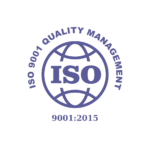Bacterial Protein Expression & Purification
An expert service for your protein requirements
In a landscape where protein-based research is pivotal, our Protein Expression & Purification solution in the E. coli host stands as a beacon of innovation, empowering scientists, researchers, and industries to unlock new frontiers in biotechnology, medicine, and beyond. Welcome to a future where protein expression and purification challenges are met with cutting-edge solutions that redefine what’s achievable.
What sets our solution apart is its adaptability to diverse protein types, from enzymes to therapeutic proteins, and its compatibility with various downstream analyses. Researchers and industries now have a robust tool at their disposal to accelerate drug discovery, protein engineering, and fundamental research, all while maintaining the highest standards of quality and reproducibility.
DETAILS
Gene Synthesis
All we need is the sequence of your protein.
Deliverables
- Codon optimized sequences taken forward for synthesis.
Vector Making
Cloning into vector of your choice with markers.
Deliverables
- Identify suitable cloning/expression vector
- Cloning with apt restriction sites
- Plasmid bank preparation
- Sequencing results
Expression
Transformation, bacterial expression and purification.
Deliverables
- Expression in E.Coli strains such as High Performance BEL21DE3, Rosetta.
- Expression check on SDS-PAGE.
- Pilot batches
- Chromatography runs
- Refolding(only if requested)
Delivery
Purified protein to be shipped in the formulation buffer.
Deliverables
- Purity valuation on SDS-PAGE ( ≥ 90% )
- Formulation in apt buffer
- Concentration
- Delivery of 1mg to 3 mg (More if the expression is good)
- Final report
Few Examples










Your questions answered
Common questions
Why use E. coli for protein expression?
E. coli is a well-established and cost-effective host organism for recombinant protein production due to its rapid growth, ease of genetic manipulation, and abundant expression systems.
What are the steps involved in protein expression and purification?
The process generally involves gene cloning, transformation of E. coli cells, induction of protein expression, cell harvest, cell lysis, purification using chromatography or other methods, and analysis of the purified protein.
What types of protein purification services are available?
Protein purification services can include affinity chromatography, ion-exchange chromatography, size exclusion chromatography, and more, tailored to specific protein properties.
How are expression vectors designed for E. coli?
Expression vectors contain a promoter, ribosome binding site, selectable marker, and cloning sites. The gene of interest is inserted to allow controlled protein expression.
What is inclusion body formation during expression?
Inclusion bodies are aggregates of misfolded proteins that can form during overexpression in E. coli. They often require denaturation, solubilization, and refolding steps during purification.
Can post-translational modifications be achieved in E. coli?
E. coli lacks some eukaryotic post-translational modification machinery, limiting its ability to produce proteins with certain modifications (e.g., glycosylation).
What are the challenges of protein purification from E. coli?
Challenges include low yields, formation of inclusion bodies, purification of insoluble proteins, and potential contamination with host cell components.
How is the purity and quality of purified proteins assessed?
Purity can be evaluated using techniques such as SDS-PAGE, western blotting, and mass spectrometry, while quality may involve functional assays or crystallization studies.
Can codon optimization enhance protein expression?
Codon optimization adjusts the gene sequence to match preferred E. coli codons, potentially improving translation efficiency and protein expression levels.
What scale of protein production can be achieved in E. coli?
Protein production can range from milligrams to grams per liter of culture, depending on the expression system and protein characteristics.
How long does a typical protein expression and purification project take?
Project duration can vary widely depending on protein complexity, expression levels, purification requirements, and the chosen protocol, but it can range from weeks to months.
Can protein folding be assisted during purification?
Yes, molecular chaperones and refolding techniques can be employed to aid proper protein folding post-purification. Note that there will be additional charges for this which is generally not included in the quote. Ask for this separately.
How is protein stability maintained during purification?
Stability is often maintained by working at low temperatures, using protease inhibitors, and handling the protein gently.
How is protein concentration determined after purification?
Protein concentration is determined using methods like UV spectroscopy, Bradford assay, or BCA assay.
How can I choose the right expression system for my protein?
Consider factors like protein size, complexity, solubility, and downstream applications when selecting an expression system.

